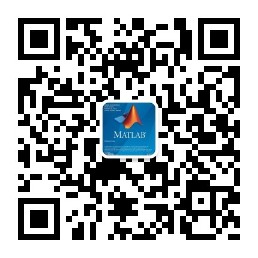博文
[转载]【电信学】【2015.11】基于距离的水下机器人导航系统
||
本文为葡萄牙里斯本技术大学(作者:João Paulo Jerónimo Santos)的硕士论文,共75页。
目前的几种水下导航系统,其中最普遍使用的是长基线(LBL),这种导航系统通常用于水下机器人的精确导航。一个典型的LBL系统包含许多系泊在海床上的声波应答器。机器人对信标进行声波询问,根据声波信号的往返行程时间计算到每个信标的距离,并使用来自声波应答器的任何时间点的距离数据来确定其位置。为了实现精确的水下导航,在进行自主机器人操作之前,必须精确测量每个已部署应答器的位置。测量应答器位置的成本非常昂贵,而且非常耗时,特别是在水下航行器被用于连续覆盖多个不同位置的测绘作业情况下。在这些扩展绘图操作期间,需要在多个位置部署、测量和询问应答器,从而为所有操作增加了大量时间和成本。因此,使用单一位置应答器的精确水下导航将为水下航行器操作提供显著的时间和成本节约。该系统被称为单信标距离导航系统,它利用机器人的运动以及来自应答器的声波信号,使机器人通过其运动最大化位置可用的信息量,然后仅使用一个应答器来定位。
在本论文中,我们设计了一种导航演算方法,这种方法只需要利用单一转发器的距离信息和Dead-Reckoning信息。为此,研究了核心滤波和估计工具(Kalman滤波器和扩展Kalman滤波器),以确定采用的最佳设计工具。由于AUV模型是非线性的,所以采用了扩展卡尔曼滤波。在算法开发完成后,对其在多种场景和运动轨迹下的性能进行了评估。此外,对算法进行了扩展,不仅可以估计机器人的位置,还可以估计机器人面临的海流情况。此外,还考虑到真实场景下,测量是有延迟产生的,而不是以固定速率发生,因此有必要进行适当的修改。最后,进行了成本分析,以评估使用单一信标定位系统的潜在经济优势。
There are several systems in use forunderwater navigation; one of the most pervasive is acoustic long baseline(LBL). This navigation system is often used for precision underwater vehiclenavigation. A typical LBL system incorporates a number of acoustic transpondersmoored on the seabed. The vehicle interrogates the beacons acoustically,calculates the range to each beacon based on the round trip travel time of theacoustic signal, and uses the range data from the acoustic transponders at anypoint in time to determine its position. To achieve accurate underwaternavigation, the location of each deployed transponder must be preciselysurveyed prior to conducting autonomous vehicle operations. Surveying thelocation of the transponders is very expensive and it is extremelytime-consuming, especially in cases where underwater vehicles are used inmapping operations covering a number of different locations in succession.During these extended mapping operations, the transponders need to be deployed,surveyed, and retrieved in each location, adding significant time and,consequently, significant cost to any operation. Therefore, accurate underwaternavigation using a single location transponder would provide dramatic time andcost savings for underwater vehicle operations. This system is called SingleBeacon Range Based Navigation and uses the motion of the vehicle, together withthe acoustic signals from the transponder, so that the vehicle maximizes theamount of information available for its location,through its movement, and thenlocates itself using only one transponder. The work developed during thisthesis led to the design of a navigation algorithm that uses the information ofthe ranges to a single transponder and also Dead-Reckoning information. To thisend, core filtering and estimation tools were studied (Kalman Filters andExtended Kalman Filters) to determine the best design tool to adopt. TheExtended Kalman Filter was the one used because the AUV model is non linear.After the development of the algorithm, its performance was assessed underseveral scenarios and trajectories of the vehicle. Moreover, the algorithm wasextendeded to estimate not only the vehicle position but also the current towhich it is subjected. . Furthermore, it was also taken in account that whenthe scenario is the real world, the measurements occur with latency and do notoccur at a fixed rate at a constant rate, it was therefore necessary to modifythe algorithm developed to deal with this fact. Finally, a cost saving analysiswas performed to assess the potential economic advantage of using single beaconposition systems.
1. 引言
2. 滤波与估计
3. 水下导航
4. 成本节约分析
5. 结论
附录A 成本分析数据
更多精彩文章请关注公众号:
https://blog.sciencenet.cn/blog-69686-1248676.html
上一篇:[转载]【计算机科学】【2011】农业环境下的全覆盖路径规划
下一篇:[转载]【无人机】【2013.06】自主式无人机在搜救中的应用